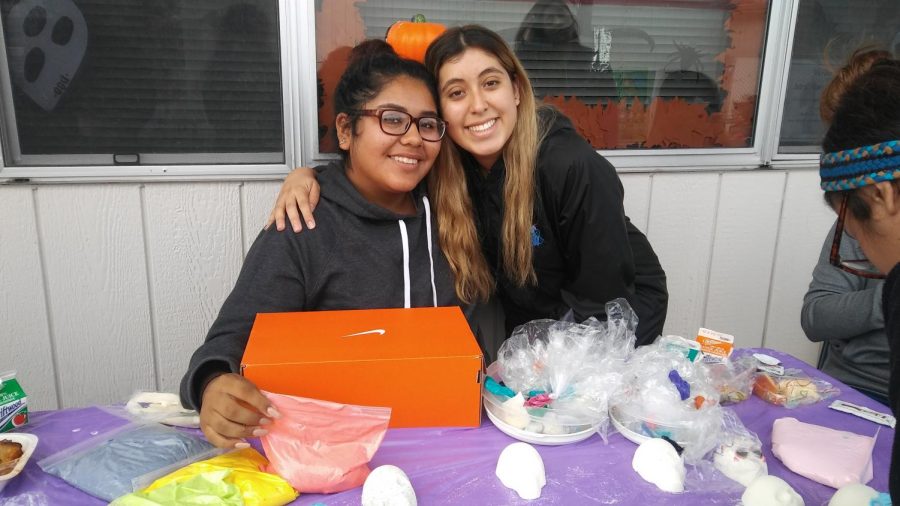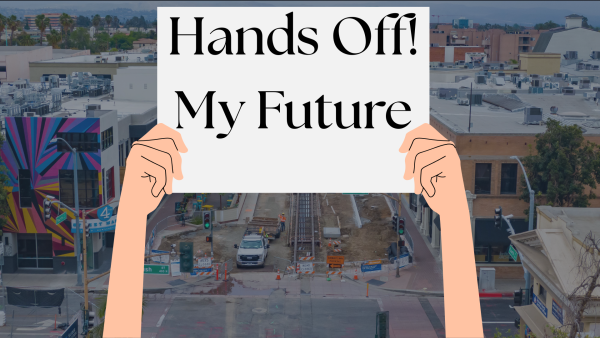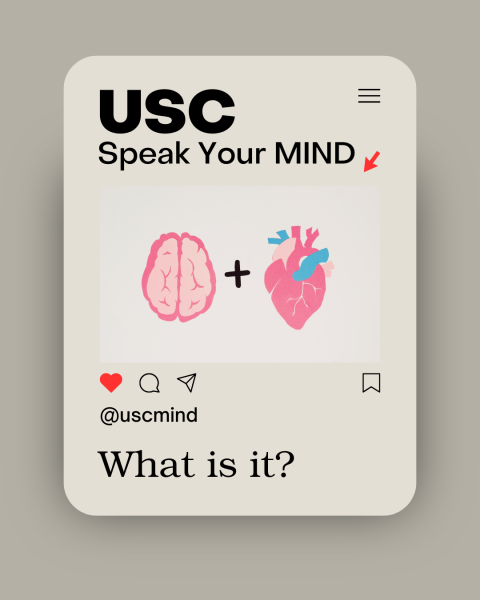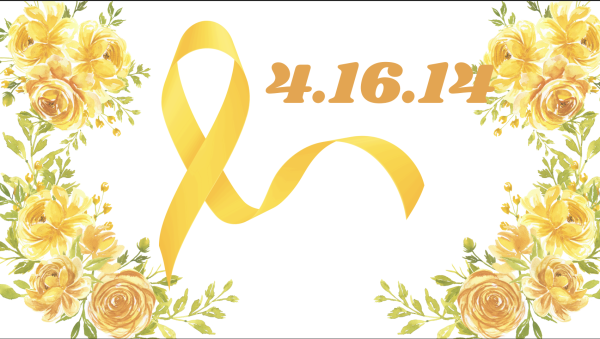What Day of the Dead is all about
Daniella Ledezma and Melisa Luis, members of Make a Difference Club, helped students make sugar skulls for Day of the Dead.
A month ago many of us went to Fourth Street for Noche de Altares to celebrate Day of the Dead, but do we really know what we were celebrating? Many of us even participate in some of the activities, but why do we paint our faces? Why do we put out food on the altars? Dia de los Muertos originates from an Aztec, Toltec and Nahua cultures. They believed that mourning the dead was disrespectful, and that death was something natural and accepted in their communities. The dead were still a part of their community, so the people kept them alive in their memory and in spirit. They believed that on Day of the Dead, the deceased would return to earth and be among the living just for that day. On October 31, the gates of heaven would open at midnight letting all of the children’s souls to reunite with their families for one day. On November 1, all of the adults’ spirits would come and reunite with their families. It is a celebration that lasts two days. Of course now, Day of the Dead is not like the celebration the Aztecs had; its changed with the influence of Christianity.
Every year we see all these decorated altars with marigolds, candles, incense, and pictures of the deceased. The altars look beautiful, but all of these things mean something:
Marigolds- The flower petals are scattered from the gravesite to the altar to lead wandering souls to a place of rest.
Water- Water is meant to quench the souls for their long journey.
Incense- Incense is meant to cleanse the area where the altar is and transmits praise and prayers.
Candles- Each candle placed on the altar is meant to represent each relative that has passed away in the family.
Pictures and toys- The pictures are of the spirits and if the spirit is a child there are toys placed on the altar.
Papel picado- Papel picado or ‘pierced paper’ is draped over the altars to signify the wind and fragility of life
Food- Pan de muerto (bread of the dead) is seen every year with its wierd shape, but there’s a reason that bread has a weird shape. It is circled to signify the circle of life and the other pieces of dough are shaped like bones or teardrops to symbolize sorrow. Drinks that could be put on the altar are Atole, a corn-based drink, or hot chocolate.
Of course Day of the Dead isn’t complete without the iconic well dressed woman with her face painted as a skull; this woman is La Catrina. She is a statement-making skeletal figure that is meant to represent death and how deep down, death will treat everyone the same.
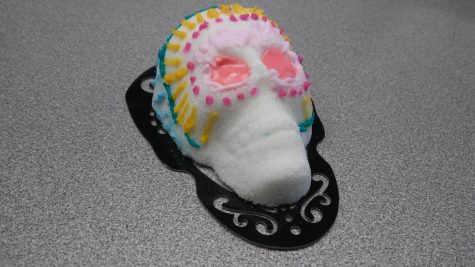
Another iconic Day of the Dead symbol is a sugar skull. Sugar skulls do not come from Aztec culture; they come from Italian missionaries in the 17th century. In fact, sugar decorations were not originally made for Day of the Dead. They were originally made in Palermo to decorate the altars of a catholic church during Easter with little lambs and angels. Mexico, a country too poor to afford imported European decorations, but rich in sugar at the time, picked up on the technique rather fast. Sugar skulls were meant to represent a departed soul, but now they are made for fun all around Latin community, even here at MCHS.
Last month Ms. Groff’s Global Studies class was researching fall celebrations around the world and decided to make sugar skulls, due to the fact that most of the community’s population was Mexican American and many of the students had never made sugar skulls. “I thought it was important to us to tap into our ethnicity, our own community, and that a lot of the students are of Mexican American background and that they’ve never had the opportunity to do it,” said Ms. Groff. It was almost impossible to figure out how to make them at first, but after she found the molds for the skulls at The Bower’s Museum, it got a little easier. After finding out what Global Studies had done, Make a Difference Club took it upon themselves to make more sugar skulls and sell them.
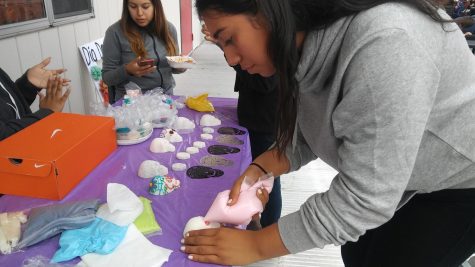
Monica Gonzalez makes her own sugar skull.
According to Ms. Groff they didn’t make much of a profit, but she is sure that everyone had a great time making them. Giana Bahena, senior, said “It was a fun activity but it was also personal because the point of a sugar skull is to make it for a deceased loved one. I made mine in tribute for my cousin; it forms a connection in a sense on Day of the Dead. I felt it gave me an insight into my own culture because I’m Mexican, but I’m not raised heavily about Mexican culture living in America.”
Day of the Dead is not a day of mourning or satanic worship like many think; it is a day where people come together and commemorate those who are no longer with us. It is a day in which Mexico’s culture is appreciated.
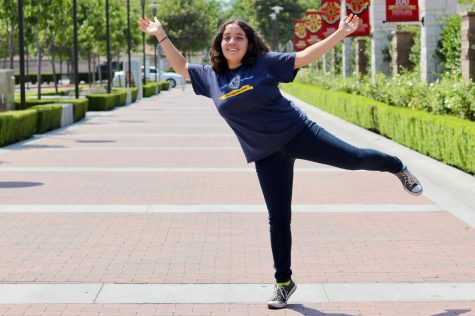
Fun Facts:
This is my third year as a journalist in the Spellbinder.
I'm always open to making friends.
I enjoy watching musicals with friends...
































